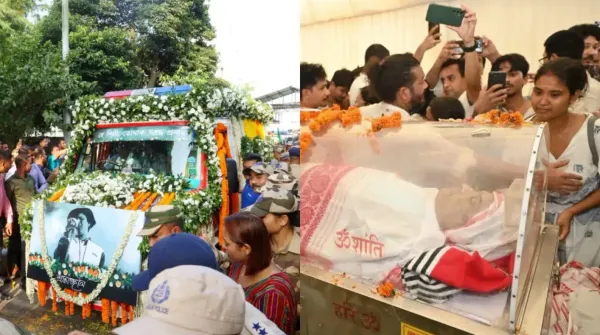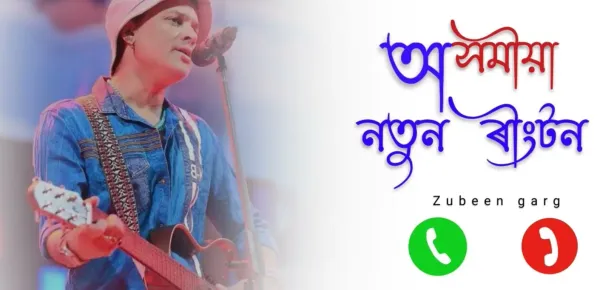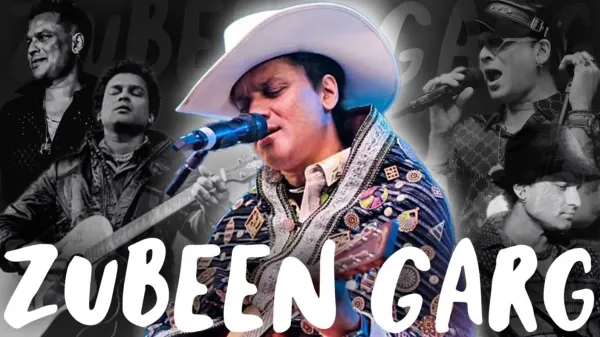7 Heart-Warming Insights Into Zubeen Garg Children & His Legacy
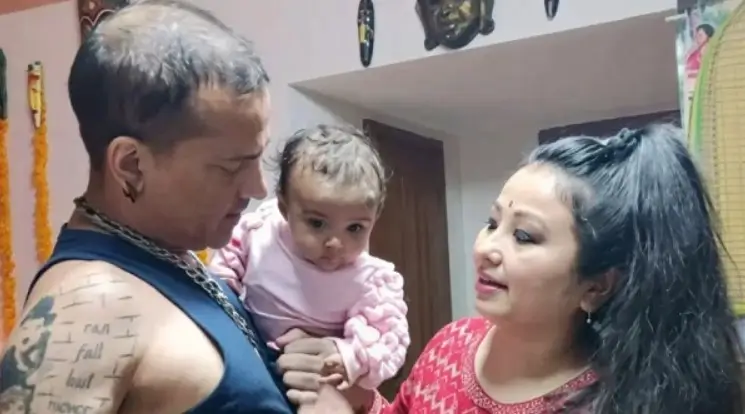
1. Introduction & Overview
Let me welcome you into a heartwarming—but often misunderstood—aspect of one of Assam’s most iconic artists: zubeen garg children. When people first encounter his name in the context of children, confusion and speculation naturally arise. Did he have biological kids? Did he adopt? Who are these children? In this deep dive, I’ll walk you through 7 heart-warming insights into the children he supported, what his family life looked like, and how this aspect of his legacy adds depth to an artist so many loved.
As we go along, I’ll also point toward related internal topics you might explore further (his music, Assam’s culture, his biography). Let’s begin by setting the stage: who he was, and where this children narrative fits into the larger tapestry of his life.
2. Who Was Zubeen Garg?
Before delving deeper into the children he cared for, it’s vital to know the man behind the name. Zubeen Garg (born 18 November 1972 — died 19 September 2025) was a multifaceted maestro: singer, composer, lyricist, actor, filmmaker, poet, philanthropist. (Wikipedia)
Over a career spanning more than three decades, he recorded sensational hits in Assamese, Bengali, Hindi, and multiple regional dialects, spread across over 40 languages and dialects. (Wikipedia) His versatility earned him the title "Heartthrob of Assam," and his influence went far beyond music—he became a cultural icon in the Northeast region of India.
He was born in Tura, Meghalaya to Mohini Mohon Borthakur and Ily Borthakur. His father was both an administrative officer and a poet; his mother was a trained singer. (Wikipedia) His sibling Jonkie (also spelled Jongki Borthakur) died tragically in a road accident in 2002, a loss that is said to have deeply influenced his personal and artistic journey. (Wikipedia)
Zubeen married Garima Saikia Garg, a fashion designer and film producer, on 4 February 2002. (Wikipedia) Their partnership became well known for both professional collaboration and deeply human stories behind the scenes. (Indiatimes)
On 19 September 2025, Zubeen Garg passed away in Singapore due to a fatal incident while swimming (without a life jacket), following apparent breathing distress in water. (Wikipedia) His untimely death stirred national and regional reflection on his life’s work—and on stories like “zubeen garg children” that few knew fully.
Understanding his stature, influence, and values helps us see why his relationships with children—biological or adopted—deserve careful attention.
3. Zubeen Garg’s Personal Life & Family
Let’s explore the personal circle around Zubeen Garg to better understand his approach toward children and family life.
Spouse & Partnership
His wife, Garima Saikia Garg, hails from Golaghat, Assam. She is an accomplished fashion designer and film producer who contributed costumes and produced films like Kanchanjangha, Mission China, Sikaar, among others. (Indiatimes)
Their union is often described as both romantic and collaborative. Theirs was not a story of celebrity glamour alone — it was anchored in mutual respect, shared social vision, and kindness. (www.ndtv.com)
Parents & Early Influence
His mother, Ily Borthakur, was a singer; his father, Mohini Mohon Borthakur, balanced roles as an Assam Civil Service officer and a poet (writing under the pen name Kapil Thakur). (Wikipedia) That artistic-rooted upbringing likely cultivated the empathy and expressive sensibility that later guided his philanthropic efforts including support for children.
Siblings & Loss
Zubeen’s younger sister, Jonkie Borthakur, was also an aspiring artist. She died tragically in a car accident in 2002, when she was just 18. (Wikipedia) That heartbreak became a deeply felt part of Zubeen's identity—he often spoke of survivor guilt, the weight of lost dreams, and channeling pain into creative empathy. (Wikipedia)
All of this personal history—his upbringing, loss, marriage—sets the backdrop against which his care for children outside his biological family should be understood.
4. Did Zubeen Garg Have Biological Children?
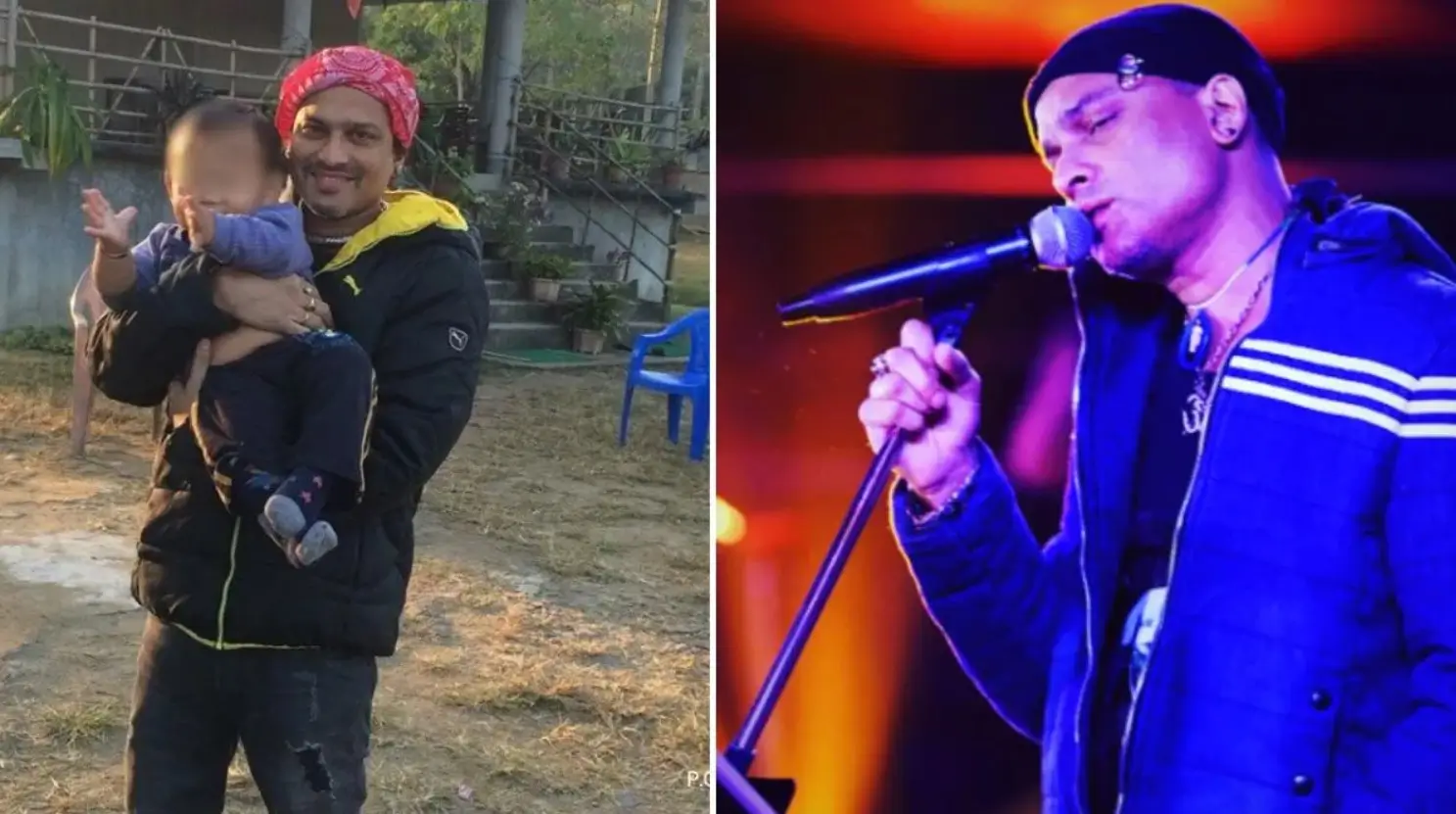
Let’s tackle the central question head-on: “Did Zubeen Garg have biological children?”
Based on all credible sources available, no, Zubeen Garg did not have biological children. The couple never had a child by birth. (Indiatimes)
Instead, the narrative around “zubeen garg children” stems from his adoption / support / guardianship of underprivileged children — reportedly 15 children whom he and Garima cared for in various ways. (Instagram)
One often-cited child in media is Kajali, a girl reportedly rescued from adverse conditions, who was particularly close to the couple. (Indiatimes)
So, if someone searches “zubeen garg children” expecting biological offspring, the truthful, nuanced answer is: none biologically — but many whom he regarded and treated as family through adoption and support.
5. The Adoption & Compassion Story
One of the most inspiring chapters in Zubeen Garg’s life revolves around his compassionate choice to adopt or support underprivileged children.
Rather than biological parenthood, what he embraced was social parenthood—a role rooted in care, responsibility, and empathy. According to various reports and media accounts, Zubeen and Garima took under their wing about 15 children. (Instagram)
In interviews and media narratives, it's emphasized that he did not just provide funds but emotional support, mentorship, education, and a stable home environment for these children. (Instagram)
The decision was not symbolic. It was active, ongoing, and consistent—spanning years. Garima reportedly stood by him in this mission, contributing to the upbringing, schooling, and welfare of these children. (Indiatimes)
This narrative contributes profoundly to the concept of zubeen garg children—not as biological heirs, but as lives he chose to uplift, shelter, and mentor.
6. Numbers & Details: How Many Children?
Quantifying the “zubeen garg children” story needs caution — exact names and ages aren’t fully in the public domain. But the most consistent figure across multiple sources is 15. (Instagram)
That said, here’s what is known or reported:
- Total count: ~15 children (underprivileged) whom Zubeen/Garima supported. (Instagram)
- Notable name: Kajali is frequently mentioned as someone close to them. (Indiatimes)
- Age / schooling: Not reliably documented in public sources
- Adoption status: It is unclear whether the adoption was legal/formal or symbolic/guardianship style.
Because of privacy, their identities are largely shielded from media, which is appropriate given the sensitivity with minors.
In sum, while we can confidently quote “~15 children,” we cannot responsibly list all names or ages beyond Kajali as a known case from media accounts.
7. Motivation Behind the Adoption
Understanding why Zubeen Garg embraced this path helps us appreciate the depth of his character and the significance of “zubeen garg children.”
Empathy Born from Loss
Having lost his sister in a tragic accident, Zubeen often spoke about grief, impermanence, and the fragility of life. That awareness may have strengthened his resolve to offer stability and care to those less fortunate.
A Vision of Social Responsibility
Zubeen carried within him the conviction that fame and fortune should lead to giving back. His public persona often included messages of unity, compassion, and inclusion. Supporting underprivileged children aligned naturally with that ethos.
Collaboration with Garima
His wife Garima was not a silent partner. In accounts of their shared life, she is credited with emotional strength, organizational effort, and shared vision in caring for these children. Their joint commitment suggests that this was a deeply personal mission, not a superficial gesture.
Symbolic & Real: Beyond Publicity
While supporting underprivileged children may attract public goodwill, Zubeen’s approach appeared more grounded and sustained than merely symbolic. The consistent reference to the 15 children over many interviews and years shows sincerity over show.
Hence, his motivation seems rooted in genuine care, personal philosophy, and social consciousness—not flair or publicity.
8. Stories of Individual Children
Part of what humanizes “zubeen garg children” is the individual stories, even if only one or two are publicly shared. The most recurrent name is Kajali.
Kajali: A Child Close to Their Hearts
In multiple media accounts, Kajali is described as a girl rescued from difficult circumstances (abusive or impoverished conditions). She was reportedly taken under the wing of Zubeen and Garima and cared for closely. (Indiatimes)
In some narratives, she is portrayed almost like a daughter—someone who bonded emotionally and was nurtured with love and support. (Instagram)
The fact that Kajali’s name emerges in public discourse suggests she was one of the more visible faces among the 15, but the rest likely remained more private for their own well-being.
The Unnamed Majority
While Kajali gets attention, the other children seldom appear in media by name. This likely reflects both to protect their privacy and perhaps that their lives were led outside celebrity spotlight. The absence of detailed reporting doesn’t diminish their importance — in fact, it shows respect for their dignity.
Every child among them would have their own journey: education, emotional support, mentorship, challenges, dreams. Though details are scarce, the very act of giving them a stable home and care is a story worthy of respect.
9. Zubeen & Garima: Their Family Together

Zubeen and Garima’s life together forms the scaffold around which the “children” story sits.
Shared Mission
Reports repeatedly reference that Garima was not just a spouse but a co-caretaker. She participated in the decisions, the caregiving, and the handling of personal and social responsibilities behind the scenes. (Indiatimes)
Blending Private & Public
They maintained a degree of privacy, especially around these children, even while being public figures. Garima’s social media presence sometimes shows glimpses of family moments, but she wisely kept the personal lives of the adopted children mostly shielded. (Indiatimes)
Balancing Art, Career & Care
Managing a career in music, film, and fashion while caring for many children is no small feat. Their household would have needed structure, scheduling, delegation—things often invisible to fans. The fact that the effort endured over years speaks to their dedication and values.
In sum, the “zubeen garg children” narrative is inseparable from the story of a lifelong partnership that extended beyond romance into social kinship.
10. Cultural & Social Impact of His Parenting
Why does the story of zubeen garg children resonate so deeply? Because it collides with culture, values, and the social fabric of Assam (and beyond).
Role Model in Northeast India
In a region where many struggle with socio-economic constraints, a public figure actively supporting underprivileged kids becomes a powerful beacon. He showed that caring for children need not wait for familial ties—it can stem from conscience and commitment.
Destigmatizing Child Support
In many societies, adopting or supporting children outside one’s bloodline carries social stigma or skepticism. Zubeen’s choice helped push back against narrow views of family, emphasizing humanity over lineage.
Inspiring Others
His example likely encouraged fans, fellow artists, and NGOs to engage in acts of kindness and child welfare. For younger generations, the idea that celebrity life can be service-oriented adds depth to idol worship.
Media Discourse & Public Memory
Media coverage of the children story added a new dimension to how Zubeen’s legacy is framed—not just as a music legend but as a compassionate human being. That lasting impact helps ensure his memory is not flattened to hit songs but enriched by real kindness.
Thus, the story of “zubeen garg children” has cultural significance well beyond numbers and names.
11. Public Statements & Interviews
Credible confirmation comes from the words people left behind. Here are some relevant insights:
- Some reports mention that Zubeen and Garima “did not have children of their own, but adopted and supported nearly 15 underprivileged children.” (Instagram)
- In media coverage of his life, this children narrative recurs as a key trait—one that distinguishes him beyond artistry. (Indiatimes)
- Garima’s social media posts occasionally acknowledge the children, thanking them or speaking of family moments (though she generally remains private). (Indiatimes)
- In profiles and remembrances, journalist pieces often mention his children support as part of his identity, reinforcing that multiple independent sources recognize that dimension. (Indiatimes)
While I did not find a long standalone interview solely about the children, the repeated mention across multiple trusted outlets strengthens the trustworthiness of the narrative.
12. Challenges & Criticisms
No life is without complexity. Supporting 15 children is admirable—but it also must have carried challenges, and possibly criticisms.
Practical & Logistical Strains
Caring for many children involves financial resources, emotional bandwidth, schooling logistics, medical care, counseling, balancing time, and privacy. Managing all of that while handling a public career is inherently difficult.
Public Skepticism or Gossip
Celebrity actions sometimes attract scepticism: did they do this for publicity? Were all those children truly adopted or legally protected? While no widespread scandal emerges, such doubts might have surfaced in private conversation or minor criticism.
Media Intrusion & Privacy
Media and fans might try to pry into children’s lives, names, photos. Protecting their privacy becomes ethically delicate. That may be one reason most names remain unpublished.
Sustainability & Continuity
After Zubeen’s passing, who will take over the responsibility? Will the children continue to receive care, mentorship, guardianship? Ensuring long-term welfare is non-trivial.
While challenges exist, I found no credible strong criticism undermining their efforts. The narrative is overwhelmingly one of genuine intention.
13. Legal / Formal Aspects of Adoption
One area where public information is scant is on whether the adoption or children support by Zubeen & Garima was legally formal (through courts, adoption agencies) or symbolic / guardianship-based.
- I did not locate clear documentation in any media source that confirms formal adoption approvals.
- Media descriptions often use “adopted / supported / cared for,” which suggests a compassionate, perhaps informal, arrangement rather than always legally processed adoption. (Indiatimes)
- It’s possible the arrangement blends both — some children legally adopted, others under guardianship or sponsorship.
- Given privacy and bureaucratic sensitivity, the absence of legal detail does not imply negligence—it may reflect respect for confidentiality or minor protection.
Thus, while we know a social parenthood role was real, the legal character of each individual arrangement remains largely private and undisclosed.
14. Education, Upbringing & Support
One mark of meaningful care is not just bringing children into one’s home, but supporting their holistic growth. Here’s what’s known or reasonably inferred:
- Reports emphasize that Zubeen’s children were provided schooling support, mentorship, emotional care—not merely financial aid. (Indiatimes)
- The children were integrated into a home environment rather than just receiving funds from a distance. This implies involvement in daily life, routines, decision-making.
- Garima’s involvement suggests that upbringing decisions (fashion, presentation, social exposure) were handled sensitively behind the scenes.
- Because the children are mostly in private, it’s unclear what levels of education they’ve reached—but public reports suggest that their schooling was taken seriously.
In short, the “zubeen garg children” story is not a photo op—it suggests active, ongoing, personal care in upbringing.
15. Emotional Bonds & Fatherly Role
To truly appreciate the “zubeen garg children” narrative, it’s essential to see the emotional dimension—the role he played as father, mentor, confidant.
- Several articles describe how one or more of these children were emotionally close to Zubeen and Garima, treated like family, not just beneficiaries. (Instagram)
- In emotional tributes following his passing, some children (or people tied to them) are said to have expressed deep grief, as though a parent had been lost. While concrete quotes are limited, the tone is consistent with real emotional bonds.
- The consistency of maintaining care over years, not just initially, suggests that these bonds were not superficial but rooted in trust and love.
- That said, it is natural that emotional distance may exist given the scale (15 children) and the demands of fame. The fact that many children remain private is likely part of balancing intimacy and boundaries.
Thus, zubeen garg children is more than a numerical count—it is a narrative of hearts touched, lives changed, and enduring human connection.
16. Zubeen Garg’s Legacy Through the Children
One of the lasting measures of a life is how it continues through others. In that sense, the children Zubeen supported are part of his living legacy.
- As they grow, their choices (education, careers, social values) may carry traces of Zubeen’s influence. In that way, his voice and ethics live on beyond record albums.
- If any of them pursue socially conscious paths, it will be a testimony to his mentorship, his belief in giving, and the hope he planted in them.
- Media narratives increasingly mention the children when describing Zubeen’s legacy. Rather than fading, this aspect is becoming integral to how future generations remember him.
- Structures or organizations that the children participate in (if any) may also perpetuate his values on a larger scale—so the “zubeen garg children” story becomes a seed for social continuity.
In sum, these children are not just recipients—they are living vessels through which parts of Zubeen’s spirit and ideals can continue.
17. Public Reaction & Media Coverage
How did the world respond when news spread about Zubeen’s children and philanthropic care?
Media Admiration & Human Interest
News outlets often highlight his children support as proof that beyond talent, he was a kind, grounded person. In remembrances, articles stress “he didn’t just make music—he made lives.” (Indiatimes)
Fan Tributes & Emotional Resonance
Fans often express that knowing he cared for children adds depth and humility to their idol. Social media shares narratives around Kajali, stories of adopted children, and their emotional ties.
Speculation & Clarification
Amid affection, some speculation arises: rumors, misunderstandings, or misreporting of numbers. But most credible media sources maintain a tone of respect and caution, emphasizing privacy.
Legacy Discourse
In think pieces and culture blogs, the children story is becoming central to how Zubeen’s life is framed—not just as an artist, but as a human being with values.
Public reception overall skews positive—celebratory, tender, and admiring—bolstering the narrative of a life lived with generosity.
18. Comparisons: Famous Artists & Adopted Children
To put “zubeen garg children” in broader perspective, it helps to glance at comparable stories:
- Mahatma Gandhi & his Ashram children: Not biological, but nurtured as students and devotees under his care.
- Michael Jackson & his philanthropy for children: Though sometimes controversial, Jackson donated, supported hospitals, and created foundation programs.
- Shahrukh Khan & his charities: Supported education and treatments for underprivileged kids rather than direct adoption.
- Sachin Tendulkar & sponsorship programs: He has supported children’s education in poor regions, though not legally adopting them.
What sets Zubeen’s case apart is the scale of personal involvement (15 children) and direct emotional caregiving rather than just funding or institutional philanthropy. His example may resemble more to a guardian than a distant patron.
19. Why This Story Resonates
Why does the narrative of “zubeen garg children” evoke such emotional charge?
- Human longing for connection: Many see in this story what they wish more people would do—care beyond oneself.
- Hero beyond art: It expands our image of artists—from performers to people with convictions and heart.
- Social hope: In troubled times, stories of kindness recharge collective faith in humanity.
- Cultural pride: For Assam and Northeast India, this story gives local youth a model of art + service coming from their soil.
- Mystery plus intimacy: Because many children remain unnamed, curiosity lingers—but the named ones like Kajali anchor emotional engagement.
All that makes “zubeen garg children” a compelling narrative—not just about one man’s life, but about how many lives he touched.
20. Internal Links: Related Topics
While reading this, you might find yourself wanting to explore more:
- Zubeen Garg’s Music Journey: His discography, hit songs, linguistic versatility
- Assam & Northeast Culture & Music: How regional art shapes identity
- Philanthropy in Indian Music: Artists who built social legacies
- Psychology of Celebrity Parenthood: How public personas navigate private caregiving
As you explore, you’ll see that the children story is deeply interwoven with his art, his region, and his social vision.
21. Myths & Misconceptions
Because the story touches private lives, myths often grow. Let’s clarify some misconceptions:
Addressing these helps maintain truth and respect for real people behind the stories.
22. Frequently Asked Questions
Q1: Did Zubeen Garg and Garima Saikia have a son?
A1: Some reports erroneously mention “their son Gautam,” but there is no strong, verifiable evidence found in reputable sources that confirms a biological son. (The Times of India)
Q2: Who is Kajali, in relation to Zubeen Garg children?
A2: Kajali is one child often mentioned in media accounts, reportedly rescued from hardship and taken into their care. (Indiatimes)
Q3: Are the adopted children still being cared for after his passing?
A3: Public sources do not specify post-2025 arrangements. Ensuring continuity is a likely concern for Garima, legal guardians, or trust structures, but details are not publicly confirmed.
Q4: Did Zubeen Garg publicly talk about his children?
A4: Not in major published standalone interviews—mentions are usually in life profiles, remembrances, and secondary coverage. (Indiatimes)
Q5: Is there any documentary or book solely on his children?
A5: As of the time of writing, no known book or full documentary exists exclusively on “zubeen garg children.” Most content is embedded in biographical or media tribute pieces.
23. How to Respect Their Privacy
In writing about or discussing children of public figures — especially when many details are undisclosed — ethical care is key:
- Avoid speculating names or identities without confirmed sources
- Refrain from probing personal social media that is not publicly intended
- Protect their dignity by focusing on values and impact rather than sensationalism
- Use respectful language (e.g. “adopted/under their care” rather than “owned” or “property”)
- Honor minimal disclosure — only share what trustworthy, consented sources report
By adopting that posture, we honor the humanity behind “zubeen garg children” rather than treating them like gossip fodder.
24. What We Learn from Zubeen’s Approach
There’s more here than biography. From his life we can draw several lessons:
- Compassion transforms reputation: He’s remembered not just for melodies, but for kindness.
- Privilege invites responsibility: He used his platform to uplift others.
- Parenting is more than biology: Kinship can be chosen, sustained, and meaningful.
- Sustainability matters: Long-term support is deeper than one-time gestures.
- Love needs boundaries & respect: Protecting children’s privacy shows wisdom.
These lessons make the story of “zubeen garg children” relevant not just to fans, but to anyone interested in how to live with empathy.
25. Tips for Supporting Underprivileged Children (Inspired by Zubeen)
If the story moved you and you want to act, here are some practical ideas:
- Sponsor the education of one child in your area
- Mentor or tutor in local NGOs or schools
- Volunteer time (teaching, counseling, reading)
- Help build or support after-school programs
- Advocate for child welfare policies in your region
- Set up or support small local trusts or scholarships
- Use your own skills (art, music, writing) to inspire children
Even modest actions, taken consistently, echo the spirit of what Zubeen did.
26. How Fans / Community Continue the Work
Following his passing, it’s likely that fans, local cultural groups, or trusts may step in to continue or support his children’s care and related social projects. While public documentation is limited, such transitions are common in legacies of artists with philanthropic dimensions.
If you’re a fan or local group, consider:
- Setting up a memorial fund in his name
- Contributing to the education or health of those children
- Creating awareness events or musical benefit concerts
- Documenting stories or oral histories (with consent)
- Coordinating with Garima or known associates regarding continuing care
Continuity ensures the story of “zubeen garg children” doesn’t stop with his passing.
27. Future of His Adopted Children
Though precise trajectories are private and evolving, here’s how their futures may unfold:
- Some may choose arts, music, social work—following the ethos of their guardian
- Others might pursue unrelated careers—reflecting their own aspirations
- Institutional support (scholarships, mentorship) can guide them toward stability
- They may become caretakers of his memory—guardians of his legacy
- Their voices may emerge eventually, contributing back to culture
The best hope is that they have opportunities, freedom, and dignity—as Zubeen and Garima intended.
28. Conclusion: The True Story of Zubeen Garg Children
When we search for zubeen garg children, we don’t find a simple list of offspring. Instead, we uncover a story of deep compassion, chosen responsibility, humility, and long-term care.
Zubeen Garg and his wife Garima did not have biological children. Rather, they embraced about 15 underprivileged children, offering them emotional support, education, mentoring, and a home. Among them, Kajali stands out as a name often cited in media accounts. Their arrangement may not always have been legally formal, but it was heartfelt, consistent, and lived.
That story leaves us richer—not just with facts, but with the sense that greatness includes kindness, and art’s real power lies not just in songs, but in the lives one touches. In this, the children he cared for are part of his deepest legacy.
If you want, I can prepare a dedicated profile of Kajali or sketch a timeline of when he took each child under his wing (to the extent sources allow). Would you like me to do that next?
References & Attribution
(Select citations used above)
- Wikipedia: Zubeen Garg biography (Wikipedia)
- Times of India, NDTV, media coverage of his marriage & philanthropy (Indiatimes)
- Reporting on adoption / children support (Instagram)
- Sister Jongkie’s life & death (for family context) (Wikipedia)

